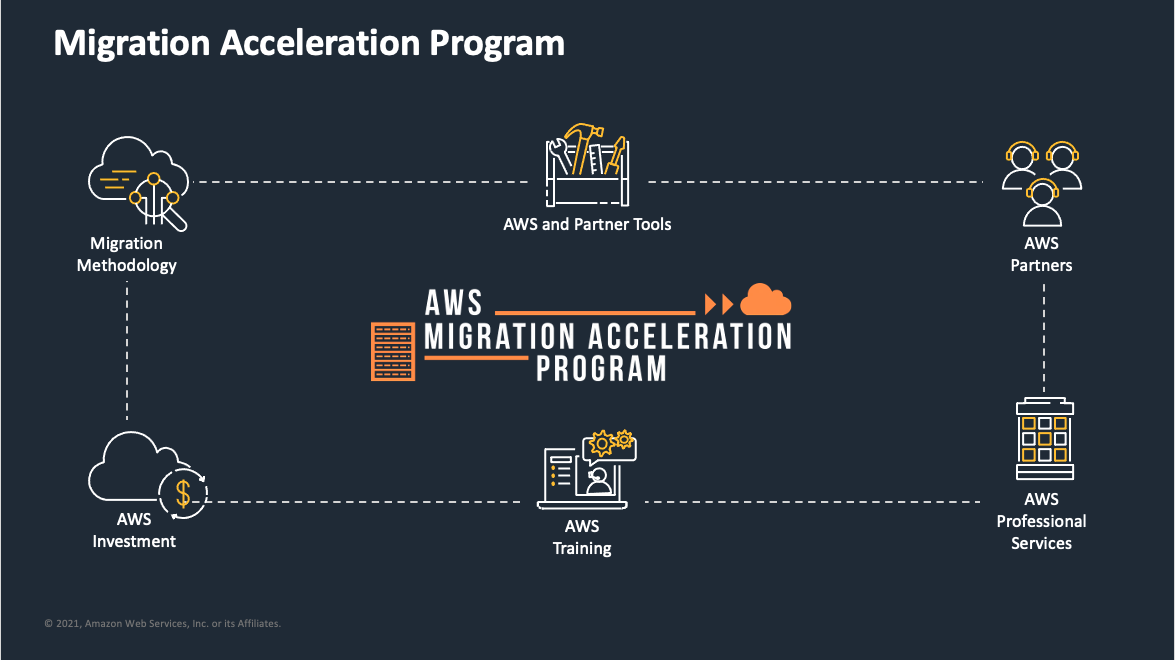When a company starts their journey to the cloud, it wants to begin this process with the utmost certainty that everything will run smoothly and without disruption to its business operations. To do this, there has to be a clear migration strategy and a clear roadmap behind it. And that is what SAP MAP provides, a programme that facilitates this type of project and to which we dedicate this post.
Since its launch in 2018, Syntax has been part of the AWS Migration Acceleration Program for SAP, known as AWS SAP MAP, and as a certified SAP MAP partner, we can generate more value for organisations as they move their SAP systems and workloads to the public cloud platform.
What is SAP MAP?
This is a cloud migration program, built on AWS’ experience of migrating thousands of SAP customers to the cloud which brings together a set of methodologies and best practices, tools and resources that facilitate the execution of such projects. In addition, it comes with financial incentives.
Another benefit is that AWS offers a customer co-investment instrument, in the form of credits or cash, to offset the cost of migration.
As a leading partner in SAP to AWS migrations, Syntax has the ability to drive these technology initiatives, which are essential for the transformation processes of companies that use SAP for their day-to-day management.
Migrations in three phases
Syntax uses the AWS SAP Migration Factory service that provides a standardised approach to projects, which allows us to streamline the deployment of different customer scenarios, and thus contribute, in three phases, to help our customers simplify the move of their critical workloads to the AWS cloud.
Phase 1: Assess readiness
In this phase, we measure the company’s readiness to migrate, identifying strengths, opportunities for improvement and business benefits.
Step 2: mobilise the necessary resources
In this step we create a migration plan and a detailed business case, which takes into account factors such as workload migration, moving interfaces, integration with other systems, accessibility and operation of the migrated environments.
Phase 3: Migrate and modernise workloads
Third, we execute the large-scale migration plan developed during the mobilisation phase and hand over all migrated systems to the operations teams responsible for maintaining the new platform. We can also provide this post-migration support through our managed services.
In the end, it’s all about organisations benefiting quickly from the advantages of the model and getting the most out of their cloud technology investments as quickly as possible, at a lower cost and with maximum guarantees.
Syntax’s cloud migration services are backed by the success stories of companies that have chosen its experts to take their workloads to the cloud, always adapting the deployment strategy to the needs of each business and with minimum disruption to business operations. This is the case of Madrileña Red de Gas, Simon, FAIN or Barceló Hotel Group, to name just a few of the companies that have chosen the company for their journey to the cloud.
If you do not want to postpone the implementation of your strategy in this area, but you need to do so with guarantees of an agile and simple process. It’s the first step to accessing the innovation, efficiency, agility and savings that cloud brings to companies’ operational environments.
